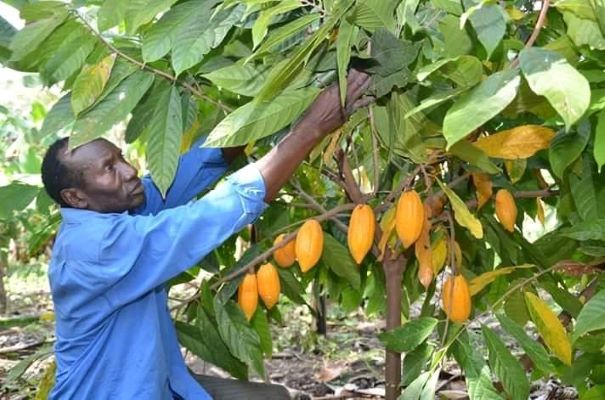
Ugandan government through the Ministry of Agriculture, Animal Industry and Fisheries (MAAIF) together with Swisscontact, an independent non-profit development organisation through its Dynamic Markets for Farmers Project have launched the Cocoa production manual to help extension workers deliver good information and understand agronomic practices of cocoa growing.
According to the ministry, cocoa production in Uganda has increased, with the value of formal exports growing at a compound annual growth rate (CAGR) of 14.3 per cent ($54.2m to $105.8m) between 2017 and 2021.
As such, it has become a significant source of foreign exchange income and a source of livelihood for different stakeholders such as farmers and traders.
Despite its positive impact on socio-economic development, cocoa productivity remains suboptimal at 2.5kg per tree, compared to the potential optimum yield of 5kg per tree achievable through the adoption of best practices.
Global cocoa market
Speaking at the recent launch in Kampala, Fred Bwino Kyakulaga, the State Minister for Agriculture, Animal Industry, and Fisheries, highlighted that the global cocoa market is projected to reach $80,000 million.
He emphasized that cocoa is a crucial African crop, with four African countries—Ivory Coast, Ghana, Nigeria, and Cameroon—accounting for 70 per cent of the global market.
Despite its positive impact on socio-economic development, cocoa productivity remains suboptimal at 2.5kg per tree, compared to the potential optimum yield of 5kg per tree achievable through the adoption of best practices.
Speaking at the recent launch in Kampala, Fred Bwino Kyakulaga, the State Minister for Agriculture, Animal Industry, and Fisheries, highlighted that the global cocoa market is projected to reach $80,000 million. He emphasized that cocoa is a crucial African crop, with four African countries—Ivory Coast, Ghana, Nigeria, and Cameroon—accounting for 70 percent of the global market.
“Uganda is among the countries with potential to grow cocoa. All districts surrounding lakes Kyoga, Victoria, Edward, George and Albert are all suitable for growing the crop,” said Bwino.
“I want to call upon the citizenry in these areas to grow the crop since currently, a few districts are growing cocoa and they are not being guided well by extension workers,” he added.
“Through the release of this manual, we aim to equip extension workers with the knowledge to effectively advise farmers on cocoa cultivation, spanning from nursery beds to harvesting and post-harvest handling.“
High-quality cocoa
The minister urged extension workers to actively engage in mobilizing and guiding the population, collaborating with the private sector to cultivate high-quality cocoa.
He emphasized that there is a substantial global demand for cocoa, and by adhering to the guidelines outlined in the manual, Uganda stands to secure a significant and equitable portion of the cocoa market.
“As government, our intervention is to tell the population about the huge global market and I encourage farmers in Uganda to take advantage of this and I have told the country the different places where cocoa can grow well and thrive,” he said.
The manual aids extension workers in delivering consistent and standardized information to farmers. Kenneth Aedu, a project manager at Swisscontact, notes the need for manuals tailored to the Ugandan context in their work within the cocoa sector.
“MAAIF and Swisscontact came up with a document that helps in responsible cocoa production for farmers to manage their cocoa fields well for the next generation. This manual is out of a year and a half’s commitment since we wanted to have information that helps our farmers get more productive.”
Harmonizing Uganda cocoa farming context
The manager explains that the manual has about five chapters customising and harmonising information in the Ugandan context. There are also chapters about cost-benefit analysis, expected yields and what is required.
Cocoa farmers in Uganda face several problems such as inadequate access to extension and advisory services among cocoa farmers in the country.
On the other hand the extension officers in the districts often lack access to materials guiding cocoa growth.
The manual is therefore intended to harmonise the existing extension materials being used by various actors.
It is also aimed at addressing the inconsistency in the delivery of a uniform extension package to primary producers and other actors along the value chain.








